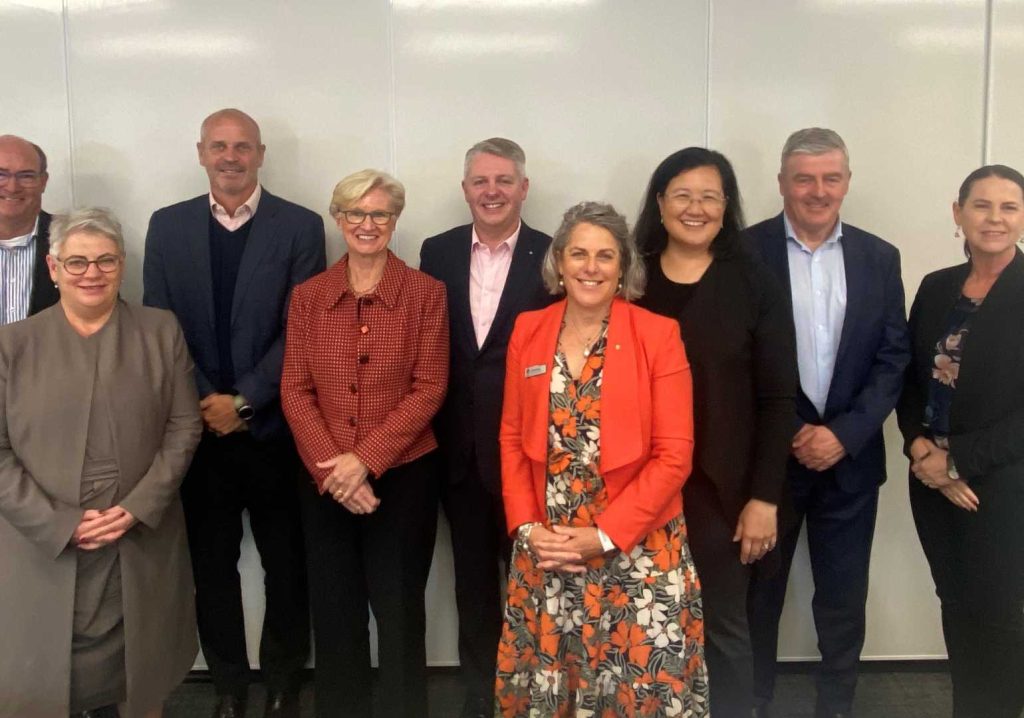Here are six highlights from a recent engineering industry leaders’ roundtable hosted by Engineers Australia.
A recent roundtable discussion, moderated by Engineers Australia National President Dr Nick Fleming FIEAust CPEng, set out to identify the opportunities and threats on the minds of CEOs and board directors in engineering and engineering-related sectors.
Attendees included representatives from property investment company Mirvac, engineering consultancies Aurecon and Beca, construction association Ghella and investment company Macquarie Group.
“The attention of CEOs is largely captured by what’s in front of them now,” he told create. “They consider the work that needs to be resourced and delivered.
“I was keen to move beyond that and look at the medium-term issues, to ensure Engineers Australia positions its thinking and activity more strategically and less reactively.”
The roundtable was preceded by another session, hosted by Engineers Australia CEO Romilly Madew AO FTSE HonFIEAust EngExec, which examined topics such as bilateral agreements and the importance of engineering-positive government policy and support.
“These conversations are different from the conversations we usually have and allow us to tap into the minds of directors,” Fleming said.
Several key themes emerged during the most recent roundtable.
1. The image of engineering
The discussion firstly touched on the perception and ‘branding’ of engineering. The essential issue, Fleming said, boils down to ensuring that students and young professionals are aware of the possibilities of engineering as a vocation.
“How do we raise the profile, impact and perception of engineering in their eyes?” Fleming asked. We are “swimming through a sea of engineering products and opportunities” that are ripe for the taking – if only would-be engineers are shown the potential that can be achieved by pursuing such a career.
2. Skills and training
Challenges in the world of skills and training were also front-of-mind for participants, in particular the role of AI and how to identify the priority jobs of the future.
“How do we bring more people into the profession?” Fleming asked. “How do we improve the balance between professional engineers and technologists? How do we get the best out of the team? Are we using professional engineers to do jobs that others could do?
“At the end of the day, the real challenge is not only to deploy an effective workforce, but to train at pace as well.”
3. Productivity
Increasing the productivity of workers was a highlighted priority. Fleming suggested a possible solution lies in taking a modular approach.
“Currently, all major engineering projects are bespoke,” he said. “Maybe we should take a more modular approach to manufacturing.”
The design of a new bridge, for example, could be chosen from a line-up of possible options rather than designed from scratch.
“This could also play out in the energy sector,” Fleming said. “Say one consulting firm does the design for substations and another handles delivery of those stations. It’s about collaboration and updating the business model to get the job done without every entity involved acting in isolation.
“That way, we could achieve much greater productivity because less time is spent engineering everything afresh.”
4. “Uberisation” of the sector
“Company CEOs and directors realise that we need to maintain high standards in the industry,” Fleming said. “Because when something goes wrong from an engineering perspective, you don’t just risk one life, you risk many. The consequences of getting something wrong are significant.”
On the flip side of the coin, however, is a realisation that there is a lot of work to get through – and that’s where considerations about balancing those two aspects come into play.
5. The rise of the paraprofessional
The tendency to elevate the standing and achievements of professional engineers over engineering technologists and engineering associates, as well as tradespeople who may not have a direct qualification in engineering but who nonetheless are highly skilled in their field, is tangible to Fleming.
“After 15 to 20 years of practice, many technologists, associates and tradespeople become phenomenally good, so we need to recognise the contribution of and nurture the entire engineering team,” he said.
“Further to this, because of digitisation, the skills that are required to deploy and maintain engineered technologies are becoming more sophisticated.”
6. The energy transition
“The energy transition is the biggest thing this country’s ever done,” Fleming said. “But if you look at the current discussion around the energy transition, the headlines that dominate are about how we can’t get it done on time, full stop.
“We have to get beyond the full stop and actually ask what we’re going to do. We need to be vocal about taking a much more modular or collaborative approach to these issues.”
Strategic conversations
Fleming said that there may likely be another roundtable to further identify solutions to these and other concerns. This is in addition to an ongoing effort by Engineers Australia to engage key leaders within organisations to canvas their perspectives and promote the benefits of collaboration.
“Engineers Australia is currently setting up a capability to conduct further strategic foresight work which would enable us to not only fuel conversations but respond to them as well,” he said. “It’s part of our organisational evolution.”
